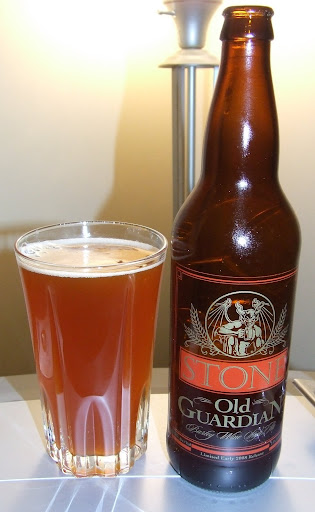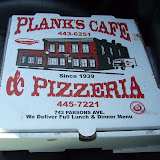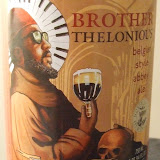
This it is...a clearing house for my latest beer tasting notes. These are relatively new beers that didn't fit into my preexisting categories (i.e. Belgian style beers, seasonal beers, et al.). Here goes nothing.
We'll start off with an absolute classic from Young's. Young's doesn't make a bad beer, and one of my personal favorites is Young's Double Chocolate Stout. The tap brew is delicious, and its closest take home approximation is the nitrogenated cans. Some people fear the words chocolate on the brew, but when they understand that the first chocolate in "Double Chocolate" is chocolate malt, they really start to panic.
Instead of being a fountain dessert drink from a malt shop, chocolate malt is a roasted barley with a nutty, medium sweet character. This brew is also flavored with dark chocolate and Fuggles and East Kent Goldings hops. It isn't exceptionally sweet, but it has flavors of hazelnut, cocoa and smoke with a creamy texture and a savory finish. The nitrogen carbonation makes this brew like Guiness with ten times the character and flavor complexity.
I also tried two more brews from Montreal's McAuslan Brewery. The St. Ambroise beers are new to Ohio as far as I know. Every beer I have tried from them was very interesting. I first tried the oatmeal stout in a previous post. I liked it so much, I decided to try the Apricot Wheat Ale. It is an unfiltered wheat beer, with flavors of lemon zest, peach and cereal grain, with the apricot coming through on the finish. It's refreshing, and it has far more in common with a hefeweizen than it does with a lambic. The apricot actually adds a new dimension to the beer. It is tailor made for a warm summer day.
The other beer was the pale ale. It is made in a European style with a subtle hop content, a ruby/amber color and flavors of fruit and flowers that push through a lively carbonation. It's a nice beer, albeit a bit lighter on the hop content than I expected. It's a nice beer, but I will rank the oatmeal stout highest, the apricot wheat second and the pale ale third.
I also sampled a range of barleywines. These sweet, high alcohol beers are often released in the winter months. Rarely does a barleywine possess less than 10 percent alcohol by volume, and a special yeast strain is often required to ferment these monstrous brews.
The first brew I tried was from Brooklyn Brewery. Brooklyn Brewery is to New York what Goose Island is to Chicago or what Sierra Nevada is to California. It is the regional craft brewer with the best distribution. Brooklyn's Monster Ale is their vintage barleywine. Due to the subtle differences in the malt and hops in a given year, there are subtle differences between the barleywines from different vintages, and I sampled the 2007 edition. The beer is aggressive at first, but it softens with five to ten years of bottle age. The brew has a tawny color, a balanced aroma of hops, and flavors of maple syrup, cherry and raisin with a well integrated carbonation and alcohol content. I enjoyed the beer, but it left me wanting a little more. It was a good barleywine with training wheels, but I definitely wanted more from the Monster. Maybe it will deepen with time.
The opposite was the case for the Stone Old Guardian. Stone's beers are all well made, and their barleywine is no exception. Most beers made by Stone are heavyweights. While this barleywine was also carries a big stick, it also spoke more softly than some of the other Stone brews, which typically offer all the restraint of Deion Sanders at a Kennedy family reunion. Old Guardian is a little restrained for a barleywine made by this loquacious brewery (buy the beer and read the manifesto on the back of each bottle for details), with a soft color that brings out the subtle (for Stone) hops and fruity malt. This beer is beautifully drinkable upon release, and it should continue to improve for decades.
New Holland Brewing, from Michigan, offers an interesting take on barleywine with Pilgrim's Dole, a barrel-aged barleywine that consists of 50 percent wheat. This brew has piles of fruit on the flavor and aroma profile, circling from lemon and blueberry and showing off the bourbon barrel notes on the finish. There is a little cloying sweetness that annoyed me, but the beer difinitely had more positive characteristics than problems. If I was grading it, I'd give it a B+ rather than an A. I liked it but didn't love it...but I'm not sorry for trying it.
Weyerbacher is another brewery that specializes in big beers. The latest one I sampled was the 12th anniversary ale. Consisting of 50 percent barley maly and 50 percent rye, this barleywine is a little more tart than sweet, with an aggressive hop character that comes through on the finish.
Back to the IPAs, my next brew was the Steelhead Double IPA by Mad River Brewing in California. They offer both a mortal pale ale and a juiced-up double IPA. The Double IPA is a style that emphasizes aggressive hop content, and with 85 ibus, this beer definitely has hop character. It is flavorful if not a touch astringent with the brutal hop character. It's a tasty beer, less hoppy than some of the uber-hopped brews from Dogfish Head and Stone, but it's far hoppier than the traditional style pale ales by Sierra Nevada.
Great Divide Brewing also features two pale ales in their portfolio. The first is an IPA, and the one I sampled highlights the beautiful flavors and aromas of beer's greatest bittering agent--fresh hops. The Fresh Hop Pale Ale utilizes freshly picked hops that are still wet with all of the essential oils that produce that unmistakable flavor and aroma that defines the pale ale style. The beer has a golden color, flavors of citrus and a hint of vegetation with the overpowering aroma of hops. The hops are well integrated into the beer, making this special offering an absolute winner.
AleSmith, like Stone, is a San Diego area brewery that specializes in big beers. AleSmith is an acclaimed microbrewery/brew pub that isn't afraid to put the pedal to the metal in the brewing process, producing such highly rated beers as the barrel aged Speedway Stout along with a number of other gems that are among the best quality brews in the United States. Their IPA, however, is one of their few beers that didn't take my palate for a magic carpet ride. The aromas of pine, eucalyptus and flowers promise great things, but the flavor is more restrained than its other AleSmith bretheren. While this is a quality beer, considering the price, there are a number of other IPAs that I consider to be of a better quality. I think the Speedway Stout is worth the price of admission, while I found the IPA to be decent but not otherworldly.
Great Lakes is another brewery with multiple pale ales. The everyday pale ale carries the sharp name Burning River, named after the history of Cleveland's polluted Cuyahoga River which was once so toxic that it actually burned. The other offering from Great Lakes is the Commodore Perry IPA, named after the naval hero from the War of 1812 who fought on Lake Erie. The golden color hides a less than subtle aroma of grapefruit and pine. The hops are so powerful that they coat the tongue in an oily finish that goes on for days. I'm glad this beer went from a seasonal to an all year product because it is delightful.
They might not call it an IPA or a Double IPA or a Monster Pale Ale or an Imperial IPA, but Bell's Hopslam could go by any of these monikers and it would fit the bill. The picture of the guy crushed by giant hop buds on the label pretty much tells the story. The beer is made with hops, hops and more hops, and it is definitely an assault on the palate. Don't plan on tasting anything else for a day or two after trying this on for size.
But wait...there's even more. In celebration of lent (that is the stupid time of year when stupid Catholics give up eating meat, and continue to act stupidly by still eating fish. How stupid!), fasting monks would subsist off of a double bock beer. There are a number of classics made in this style (see Salvator and Celebrator for classic German examples, or Bell's Consecrator for an American version). These full bodied, high calorie beers kept German Catholics fat and happy during a Lenten fast.
Flying Dog, Colorado's gonzo brewer, made a new Wild Dog offering, and this time it's a dopplebock. Interestingly enough, it was an open source collaboration with home brewers, and the complete recipe is available online. The beer is deep mahogany in color, with a sweet, fruity flavor that is counterbalanced by a hoppy finish. It's quite tasty, and it should help you get through the season whether you are fasting or simply drinking your way through the season, religious rules be damned.
My first experience with a beer carrying the name dopplebock was brewed by Wisconsin's favorite son Leinekugel's. The Big Butt Dopplebock used to be available as a dollar drafts at my favorite watering hole back in the day, and man did I abuse that privilege. This dark complected lager, while now costing quite a bit more than a buck, still is one of my favorites from Leinie. It's dark, sweet and strong, and it should help you drunkenly stumble your way through the Catholic holidaze.
Since we're waxing philosophic on German beers, now is the best time to talk about Paulaner Hefe-weizen. This classic style has given birth to a number of American knockoffs (Blue Moon is the most urbane example), but to appreciate it, you must go to the source. And Paulaner is a fine example of a German classic. This unfiltered wheat beer often has it's acidity magnified by the addition of a lemon, but it's delicious with or without the addition of citrus fruit. It is a clean, with notes of clove and tropical fruit. This beer was destined to quench your thirst on a balmy summer day.
Finally, I'll wrap it up with a few other odds and ends. I sampled a brew from Oregon's hippie kingpins Rogue. No matter what, Rogue's beers always display great character, and the Morimoto Soba Ale, made with roasted buckwheat, is no exception to the rule. The brew is redolent of hazelnuts and cream with a long finish. It is a different taste, and it should be, as buckwheat is technically a fruit and not a grain. Whatever it is, it tastes delicious.
Jolly Pumpkin is a Michigan brewery that craft brews beers, many of which are bottle conditioned, including the Bam Biere. While I am a big fan of most of their beers, this one came off as a bit too aceitic for my liking, with a vinegar character that overpowers the rest of the flavor profile. I like Jolly Pumpkin's brews, but this one swung and missed in my humble opinion.
I bought the Stoudt's Fat Dog stout strictly because it was called Fat Dog. Okay, maybe I bought it because Stoudt's makes good beer, but the fat Lab on the front label definitely sold the deal for me. Fat Dog is actually a bottle conditioned mixed breed, as it is a blend of oatmeal stout and imperial stout with a fatty 9 percent alcohol. The roasted malt is apparent in both the aroma and flavor profile, and the imperial stout sweetens the finish up nicely. You'll feel like a fat dog after drinking six of these.
The Shiner Black Lager was the same color as the Fat Dog, but it was not nearly as hedonistic of a pleasure. It is a Texas brew made in the Schwarzbier style, and it comes off as light and almost flavorless. Shiner makes some decent brews, but the Black Lager is definitely not one of them. Stick to the (questionably named) bock and the hefeweizen.
One of my worst experiments gone wrong came in the form of the Baltika 9. I remembered Baltika as a fairly characterless Russian swill, and my memory served me well. But I couldn't pass up the 51 ounce plastic bottle that it came in. The 9 is Baltika's extra fancy reserve beer. I'm not sure if it was the plastic bottle or the inferior Russian brewing tradition, but Baltika tastes about what I would have expected Boris Yeltsin's urine to taste like after a three day vodka bender. File this under the label "toxic."
Last but not least, Straub Light is a Pennsylvania brew advertised (as are all Straub products) as All Natural. Though free of preservatives, it was also free of taste. It is priced between Miller Lite and Amstel Light, and it's quality falls between the two, making it a fair market value. Drink this if you're too hoity-toity for Miller but too plebian for Sam Adams Light.
Check out the pictures below, and make sure to put something cold and delicious in the fridge.









